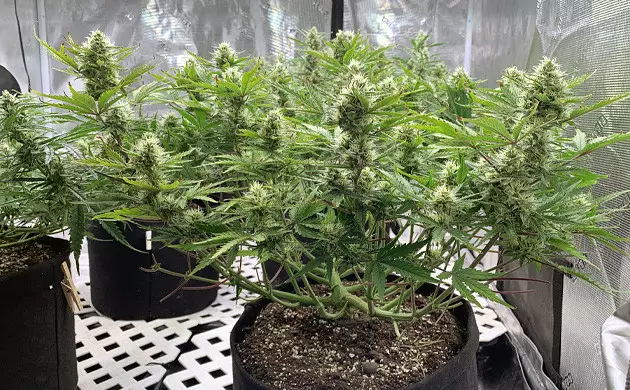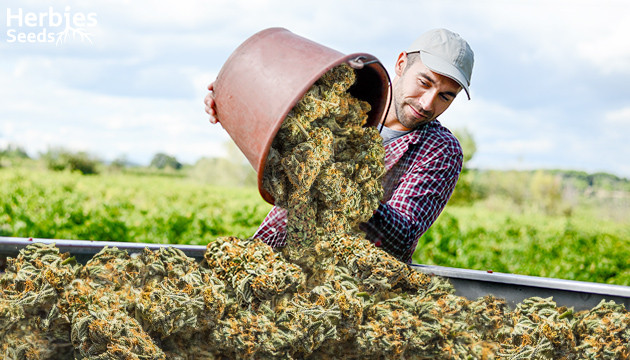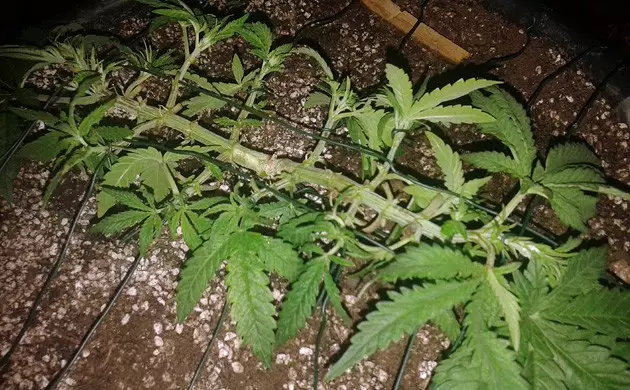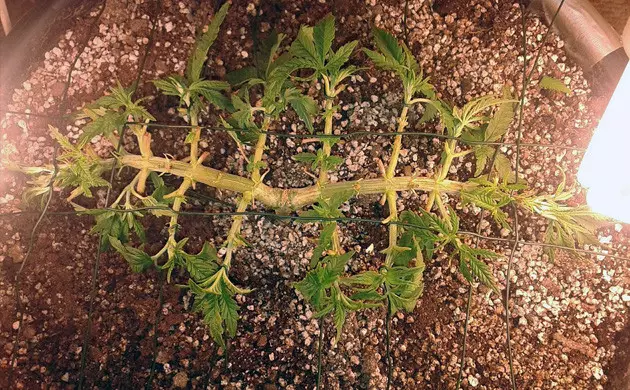Fluxing Cannabis: Everything You Wanted To Know About This Growing Technique

When you think of plant training techniques, chances are you call images of LST, topping, and more into mind. But here’s one arcane technique that you may not have heard of: fluxing. This technique, a fairly new development from a well-respected home grower, is making waves among cannabis cultivators for its ability to boost yields and grow healthy plants. In this post, we’ll explore everything about fluxing cannabis!
Fluxing Cannabis: What Is It?
Fluxing cannabis is a plant training technique. Think of it as a combination between manifolding, ScrOGging, LST, and topping. In this section, we’ll start with how and why you should try fluxing. Then, we’ll go into a little bit of the method’s background. Finally, we’ll go head-to-head with some pros and cons of fluxing.

Fluxing: How and Why?
Why flux your weed plants? The answer is simple: yield. Fluxing helps your plant focus energy on each of its branches instead of one single top. That leads to an even canopy where each branch gets equal amounts of light.
In addition, fluxing helps promote light penetration and airflow from the top to the bottom of your canopy. This increases overall plant health and minimizes chances of infections taking root.
How Did Fluxing Start?
While the fluxing technique may be fairly new to many growers, it’s actually been around the block for quite some time. In fact, the method can trace its origins back to 2014.

It all started with a grower named Light Addict. He originally built a grid from green twist tie and tried fluxing a single plant. Long story short, it worked. Light Addict’s technique met significant praise online. The technique provided enough of a boost to his clout that he published a book detailing the fluxing method along with other growing tips.
Pros and Cons of Fluxing
Fluxing weed has several benefits. First and foremost, it can help you boost your yields. It also minimizes larf and other plant waste by distributing all of your plant’s energy evenly. Finally, fluxing is a great way to grow tall, lanky plants indoors. Since you’re creating so many tops, you can focus on growing sativas outwards instead of upwards.
However, there are a few shortcomings to this technique. Foremost among them is effort. It takes significantly more dedication to successfully flux your plants than it would be to just SOG or manifold them. In addition, you can’t just use any genetics for fluxing cannabis. Instead, you need to use photoperiodic plants. That way, you can control when they flip into flower.
Fluxing Cannabis: Equipment and Process
And now we get to the juicy bits. Below, we’ll explain what kind of equipment you need to try fluxing weed correctly. Then, the main event. We’ll cover fluxing your own plants in a step-by-step guide.
Necessary Equipment for Fluxing of Cannabis
Green Twist Tie – If you want to follow Light Addict’s fluxing technique to the letter, you’ll need copious amounts of green twist tie. You’ll use this tool to create a grid across the top of your canopy. Each square in the grid gets its own branch.
Large Smart Pot – Smart Pots are a great choice whenever you need to use green twist ties for trellising. That way, you can punch holes in the pot. This allows you anchor green twist tie directly to your Smart Pot. Since fluxing cannabis requires big plants, you’ll want to go with a 10-gallon pot.
Trellis Netting – What if you don’t want to take the time to make your own trellis from green twist ties? Luckily, there’s a solution! You can buy pre-made trellis netting that will work just as well. Just make sure it’s anchored tightly to your Smart Pot!
HPS Grow Lamps – When Light Addict first penned his guide to flux training weed, he used CFL grow lamps. In retrospect, he claims he would have preferred HPS lights. Although these lights use more electricity, they pump out more lumens per watt to supercharge your plants.

Before You Start Fluxing Weed: Basic Tips
When you begin fluxing, it’s important to remember to start while your plant is young. You’ll want to begin the manifolding process during week 3 or 4.
Here’s another important tip for early fluxing. Keep your plant under 24 hours of light during most of veg. According to Light Addict, a plant kept under 24 hours of constant light will stretch harder during the first two weeks of flower than a plant with 16 or 18 hours of light.
Finally, make sure not to tie green twist ties too tightly around your branches! Give your girl room to grow. You don’t want to cut off nutrient flow through her vascular system!
Weed Fluxing: A Step By Step Guide
To start fluxing, top your plant once it develops its third node. This will give you two new top colas, with each one receiving equal energy.
Give your plant at least 3 days to heal after topping. Then, transplant it into the large smart pot. Once there, you can tie down each top with green twist ties. If you’re using trellising for fluxing, install the trellis wire and tuck your tops beneath them.
After another week or two, each of your main tops will have developed several new nodes. Remove every other node from each branch. Then, attach green twist ties in a grid so they hold each new bud site down. Eventually, they’ll turn upwards as they mature into their own tops.
Once another 3-5 days pass, attach each new top individually to a twist tie. Connect the other end of the twist tie to the rim of the Smart Pot.
At this point, you’ve essentially finished fluxing! Wait at least a week before flipping into flower. Let your plant grow naturally and keep an eye out for any problems that crop up during the flower phase.
Final Thoughts on Cannabis Fluxing Technique
If you’re thinking about trying out fluxing cannabis for yourself, be patient. Remember, this is an advanced technique. It takes time and effort to successfully employ fluxing in your garden. But if you can pull it off, you’ll definitely be happy come harvest day.
Herbies Head Shop expressly refuses to support the use, production, or supply of illegal substances. For more details read our Legal Disclaimer.



















Thank you for leaving a comment for us!
Your feedback will be posted shortly after our moderator checks it.
Please note that we don’t publish reviews that: